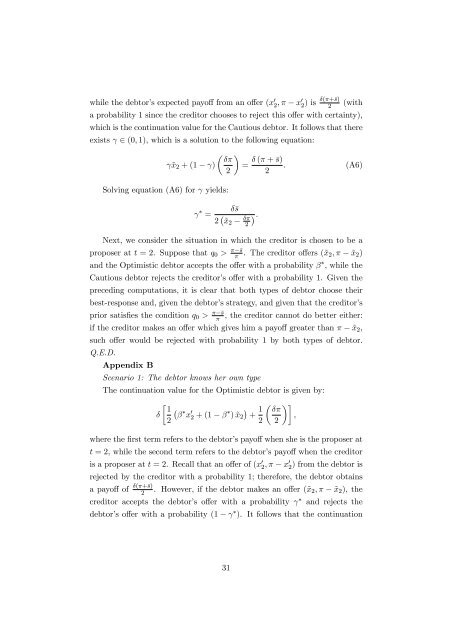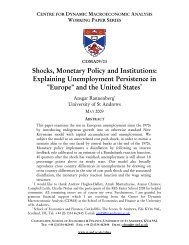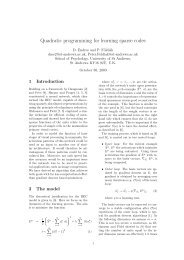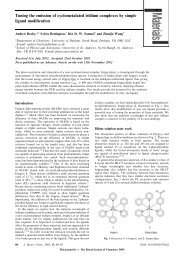Delay and Haircuts in Sovereign Debt - University of St Andrews
Delay and Haircuts in Sovereign Debt - University of St Andrews
Delay and Haircuts in Sovereign Debt - University of St Andrews
You also want an ePaper? Increase the reach of your titles
YUMPU automatically turns print PDFs into web optimized ePapers that Google loves.
while the debtor’s expected payo¤ from an o¤er (x 0 2 ; x0 (+s)<br />
2 ) is<br />
2<br />
(with<br />
a probability 1 s<strong>in</strong>ce the creditor chooses to reject this o¤er with certa<strong>in</strong>ty),<br />
which is the cont<strong>in</strong>uation value for the Cautious debtor. It follows that there<br />
exists 2 (0; 1), which is a solution to the follow<strong>in</strong>g equation:<br />
<br />
~x 2 + (1 ) =<br />
2<br />
Solv<strong>in</strong>g equation (A6) for yields:<br />
( + s)<br />
: (A6)<br />
2<br />
=<br />
s<br />
:<br />
<br />
2 ~x 2 2<br />
Next, we consider the situation <strong>in</strong> which the creditor is chosen to be a<br />
proposer at t = 2. Suppose that q 0 > s<br />
. The creditor o¤ers (~x 2; ~x 2 )<br />
<strong>and</strong> the Optimistic debtor accepts the o¤er with a probability , while the<br />
Cautious debtor rejects the creditor’s o¤er with a probability 1. Given the<br />
preced<strong>in</strong>g computations, it is clear that both types <strong>of</strong> debtor choose their<br />
best-response <strong>and</strong>, given the debtor’s strategy, <strong>and</strong> given that the creditor’s<br />
prior satis…es the condition q 0 > s , the creditor cannot do better either:<br />
<br />
if the creditor makes an o¤er which gives him a payo¤ greater than ~x 2 ,<br />
such o¤er would be rejected with probability 1 by both types <strong>of</strong> debtor.<br />
Q.E.D.<br />
Appendix B<br />
Scenario 1: The debtor knows her own type<br />
The cont<strong>in</strong>uation value for the Optimistic debtor is given by:<br />
<br />
1<br />
<br />
2 x 0 2 + (1 1 <br />
) ~x 2 + ;<br />
2 2<br />
where the …rst term refers to the debtor’s payo¤ when she is the proposer at<br />
t = 2, while the second term refers to the debtor’s payo¤ when the creditor<br />
is a proposer at t = 2. Recall that an o¤er <strong>of</strong> (x 0 2 ; x0 2 ) from the debtor is<br />
rejected by the creditor with a probability 1; therefore, the debtor obta<strong>in</strong>s<br />
a payo¤ <strong>of</strong> (+s)<br />
2<br />
. However, if the debtor makes an o¤er (~x 2 ; ~x 2 ), the<br />
creditor accepts the debtor’s o¤er with a probability <strong>and</strong> rejects the<br />
debtor’s o¤er with a probability (1<br />
). It follows that the cont<strong>in</strong>uation<br />
31
















